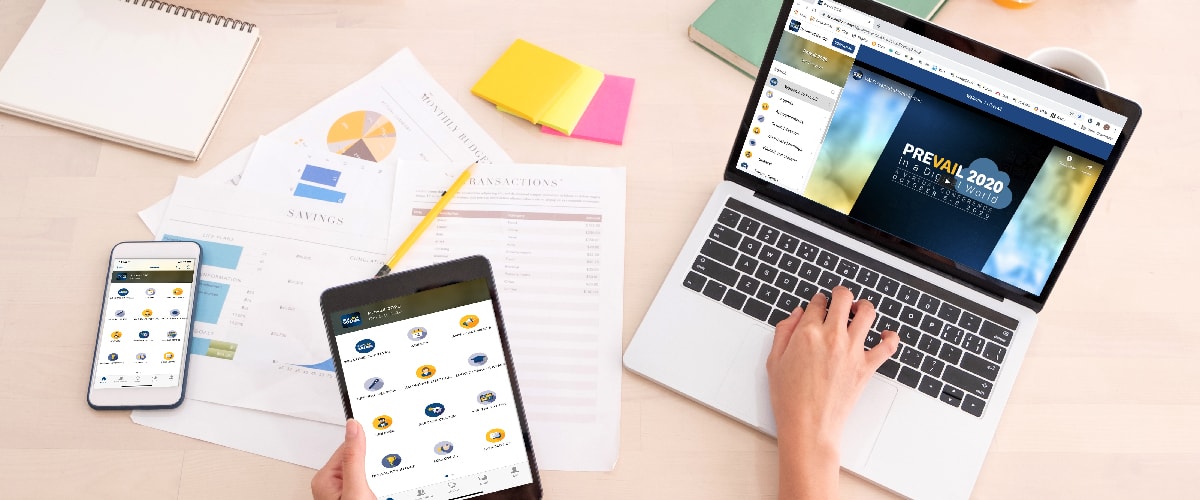 Web Content Viewer
Web Content Viewer
Virtual Connection: Practical Planning Tips for Your Online Conference

Moving a physical conference to a virtual experience is no small feat, especially when layering on the challenges posed by today’s remote work and changing employee roles. Like many businesses this year, our Customer Conference, Prevail 2020, has shifted virtually as we seized the moment to bring a traditionally in-person extravaganza online for the first time. After months of planning, our event is almost upon us. As we head into the big week, I want to share some thoughts on how to begin, plan, and execute a virtual conference today.
Keep in mind that when you create a virtual conference, you will bring together many of the same elements needed for a physical event, with a bit more technology, creativity, and new ways for engagement. This is your opportunity to attract even more people to your event with diversified roles, whether customers, partners, speakers, and even employees, without the physical logistics of time out of the office and travel getting in the way. On the other hand, you have to find exciting ways to connect people so they can engage in impactful and meaningful ways, which can be more challenging than at a physical location.
To that end, here are a few key elements needed to plan a successful virtual conference today.
Pick the platform that Suits Your needs
Decide which platform best meets your requirements, including opportunity for a solution center, ease of use, and registration control with a full-featured registration experience to collect attendee information and securely process payments, if applicable. Do you want small group discussions and breakout rooms? How about time for a main tent and guest speakers? The platform you choose should easily handle your main requirements. Also make sure the platform has stellar customer service and support available before and especially during the event.
Assign your Team
Assign conference planning roles and meet regularly for status and project check-ins. This is what many companies would normally do for a physical conference, but interacting virtually brings new responsibilities and everyone should be aware of their roles.
Shine the Light on your Marketing
After you select your platform, set the date, and put your conference team in place, it’s time to create your theme and your timeline to share your messaging to your top audience, reach out to speakers, and kick off your marketing tactics to drum up attendance. Customize your colors, logos, screens, banners, messaging, and more. Leverage gamification, banner ads, and sponsor profiles to reach your audience across email, social media, and mail.
Equipment Check
Although you would normally perform an equipment check during a physical event, it’s essential to schedule a digital practice runs before your virtual conference takes place, especially if this is your first virtual event. Be sure to include all internal and external players in the precheck run through to test the software and make sure each person understands the functionality of the platform components available. This will help ensure the best outcome for your sessions, speakers, classes, activities, and live or pre-recorded speakers in a seamless environment.
Networking and Engagement
Boost your engagement by adding surveys, polling, virtual games, Q&A’s, prizes, and social media connection before and during the event. Entice your attendees to engage with you and each other, and add networking and interaction throughout, allowing for meaningful experiences that matter to them. A virtual event offers the momentum for attendees to stay connected afterward in ways that aren’t the same with a physical one, therefore important connections made during the conference can lead to even greater ones down the road.
Remember, It’s your conference, your customers, and your brand. Build an experience your customers, sponsors, and employees will be discussing for a long time after.
Lisa Vormittag
Chief Financial Officer
Chief Financial Officer
Comments
By using this site you agree to our Privacy Policy and our Terms of Use.
120 Comac Street
Ronkonkoma, NY 11779
Ronkonkoma, NY 11779
 | Vormittag Associates, Inc. ©2025 |
| Vormittag Associates, Inc. ©2025 |